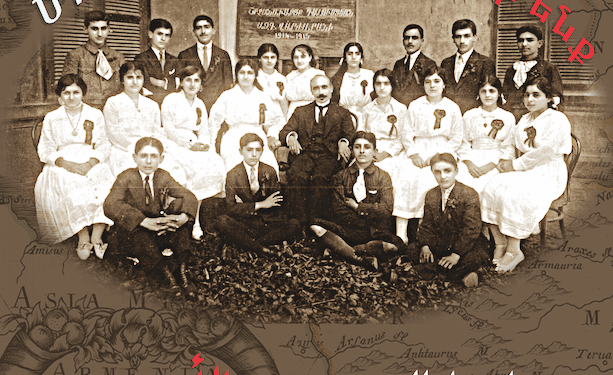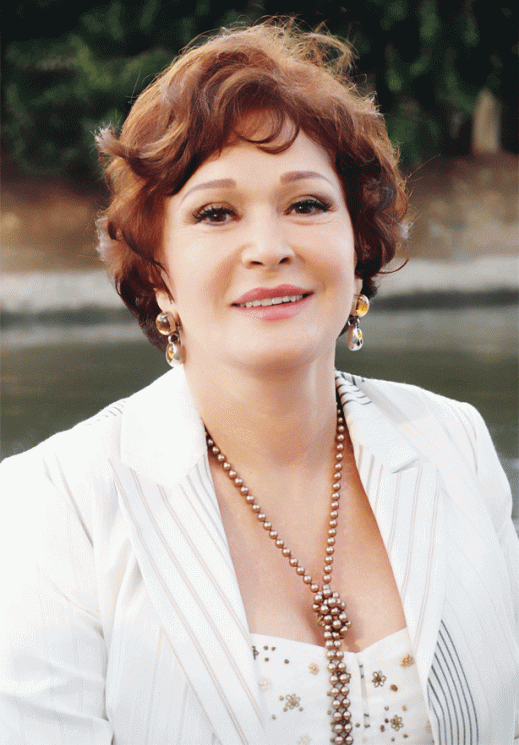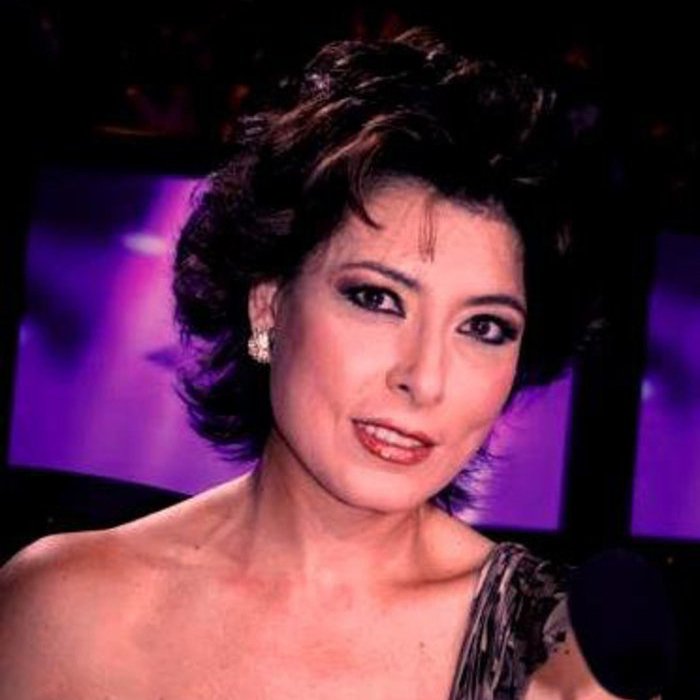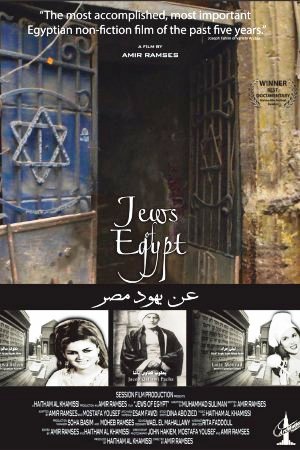During this 38th edition of the Cairo International Film Festival (Ciff), I could see We are Egyptian Armenians which was scheduled in the International Panorama section. Difficult to have a ticket, the film having been screened three times at a closed counter, and the spectators were not only Armenians!
We are Egyptian Armenians is a 90 -minute documentary film, written by Eva Dadrian, directed by Waheed Sobhy and produced by Sherif Mandour and Hanan Ezzat.
Waheed Sobhy, the director, says that in doing research concerning the Armenian photographer Van Léo about which he had to make a film, he had discovered this Armenian community. He had then realized that himself, like the vast majority of Egyptians, did not know the history of this community. In fact, he found that around 150 years of contemporary history in Egypt was completely unknown and forgotten.
Sobhy then changed project and with the help of Eva Dadrian and Hanan Ezzat, he decided to make this documentary, that they wanted a message of tolerance and acceptance of the other. The film also emphasizes the period during which Egypt had opened its doors to peoples around the world so that they can live there, work there and share their cultures with the Aboriginal people.
Nubar Pasha Nubarian Prime Minister in 1878
Although the Armenians had been present in Egypt for centuries, there were well integrated and even held high office there, such as Nubar Pasha Nubarian who became Prime Minister in 1878, most of them arrived between 1915 and 1918 following the Armenian genocide. Encouraged by their parents and friends already on the spot, they will continue to flock until the early 1950s (around 60,000 Armenians in Egypt between 1950 and 1955). But most of them left during the 1960s, following the rise of panarabism and the nationalization policy led by Nasser. They will settle mainly in Europe, the USA and Canada. Today, there are only about 7,000 in Egypt.
Through the Armenians who arrived after the 1915 genocide, this film relates the stories that were shared and transmitted from generation to generation. It reveals how Egypt gave them equal rights as citizens and allowed them to preserve their language, culture and inheritance by building their own schools and churches. But above all, it shows how the Armenians participated in the economic, social and cultural life of Egypt by giving their best country to their best.
The Egyptian actress of Armenian origin Lebleba
We discover this Armenian community through many stories from several people or families, such as Alexander Saroukhan, a very famous caricaturist, or Levan Alexander Boyadjian, photographer. We also find the little star Fairouz actress (his real name Perouz Artin Kalfayan) and her sister Nelly, actress also, famous for her fawazir from Ramadan, or the big star Lebleba (his real name Ninochka Manoug Kupelian).
We are Egyptian Armenians tells the contribution of the Armenian community to the economic development of Egypt in various fields such as printing, jewelry, watchmaking…. In addition to the archive documents and various photos, it will mainly rely on testimonies, mostly of the elderly, these having themselves lived several events occurring over the years and also being among the rare survivors which could create a link between those who have arrived in Egypt, their parents, and the 3 or 4 generations born in Egypt. These elderly people being a way to convey the history and oral stories of this community. Besides, among them, two witnesses lived during the reign of King Farouk and a few during the time of Nasser. And they all remember a lot of family anecdotes. It should be noted that no scenario was provided to the witnesses. Questions were only asked and they answered each in their own way and speaking freely.
Through the Armenians who have chosen to stay in Egypt and who still live there, this documentary depicts the Armenian Egyptian community, which it was and what it has become. A community attached to its traditions and its particularities but which feels entirely and deeply Egyptian.
The title of the film also precedes the Egyptian quality before the Armenian, because precisely, not only are all these people of Egyptian nationality, but above all they feel above all Egyptian. They are Egyptian, but of Armenian origin.
“I am 100% Egyptian and 100% Armenian, I know that mathematically it is not possible, but that is. I am both at the same time and the one who thinks that I am mistaken has only to go see my father ”. This is how one of the people filmed. Another person said, “Whenever I go to Port Said, I kiss the ground, that’s where I was born”.
Singer and actress Anouchka even said: “If I had been a man, I would have joined the army”.
The Egyptian actress of Armenian origin Anoushka
Which attracted my attention the most in We are Egyptian Armenians is that he especially tells a success. Success in all areas. This success is that of all Armenians, without distinction between Orthodox and Catholics.
It is the success of a community that has evolved and adapting while remaining attached to its traditions, customs and identity. The film particularly insists on the preservation of Armenian culture, on the importance of art and on the transmission of intangible heritage which therefore seems essential. This transmission of culture being made through several institutions, such as the church, the school and the various sports clubs, dance, song … where we teach them the history of their people, their language, their religion, its culture, its literature …
This feature film also highlights the importance of education, has always been mixed and so dispensed to children, girls as boys, in the same way. We also learn that the oldest private school in Egypt, established in 1854, is Armenian.
The documentary also shows how important community solidarity is.
Looking at We are Egyptian ArmeniansI thought of another film and another Egyptian community: Jews of Egypt of the director Amir Ramses and the Egyptian Jewish community.
Jews of Egypt 1 movie poster
Jews of Egyptjust like We are Egyptian Armenians, Tells an Egyptian community, its history, its peculiarities … But the idea that strikes me is that the first tells the disappearance of the Jewish community while the second recounts the prosperity of the Armenian community.
There was a time when Egypt (just like Tunisia) was a cosmopolitan country where several communities of various religions and various origins cohabited together. This diversity had allowed the Egyptians to be opened, to move forward, to develop, to enrich themselves intellectually and even economically. A pomp tolerance period and peaceful and beneficial cohabitation among all.
The vagaries of history and various disastrous political decisions have made this cosmopolitanism ended. But the various Egyptian communities have experienced different spells. Jews of Egypt And We are Egyptian Armenians Show us two communities, two destinies. These films tell us about a successful integration, the other an extinction.
The common point between these two communities is that they had to undergo these political decisions.
Unlike the Armenians who had not been forced to leave, although they were pushed by Nasser’s nationalization policy, the Jews had been forced to exile, and even downright expelled for several of them. Only a few irreducibles have remained against all odds, and today the Jewish Egyptian community almost no longer exists, barely some very old people who will soon disappear. Only a few vestiges, some synagogues and various buildings will remain that could also vanish over time if we do not expect their preservation today.
In an interview published on Al AhramHanan Ezzat said: “I hope that the new generations of Egyptians will learn something through this film and through all these people that we see and realize how diverse Egypt was, tolerant and open”.
In fact, this documentary depicts an Egypt from the beginning of the twentieth century as a country of freedom, acceptance of the other and tolerance and peace where the Armenians had been received with open arms and had the right to exercise their religion freely and in complete safety. They had been quickly integrated into Egyptian society and had the right to build churches, schools and set up their own businesses. They also had the right to maintain their own language and exercise their own traditions, celebrate their parties and perpetuate their culture.
By looking at this Egypt from this beginning of the 20th century, we learn that it is only by accepting, absorbing and celebrating the cultural differences that we can outdo ourselves and that this can only benefit the whole community. Diversity is actually richness and strength.
We are egyptian armenians trailer from Waheed Sobhi we Vimeo.
Neïla Driss
Read on the same subject:












